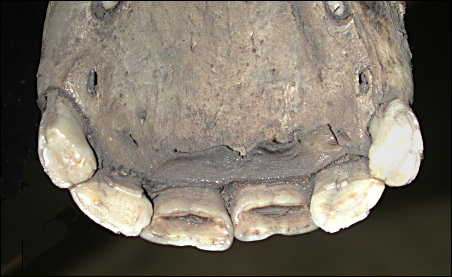

Ever give a gift to someone, and the first thing they do is look for a price tag? Kind of spoils things for you, to say nothing of it being downright impolite. After all, it should be the thought that counts, not the value of the present.
Switching subjects, horses eat very abrasive foods, resulting in rapid tooth wear. The front teeth of horses, the incisors, have hollows, or cups, at the ends rather than coming to relatively sharp edges as in ourselves. As the rims of the cups wear away, the depressions become shallower and shallower and eventually wear away entirely. Variations in the depths of the cups mean that typical patterns of wear become apparent as a horse ages. This allows people practiced in the art to be able to judge the age of a horse with considerable accuracy, and a horse buyer usually looks at the teeth to check its age.
So if you're given a horse, be polite and remember the old saying,
that you don't look a gift horse in the mouth.

Contributor: Arthur H. Harris, Laboratory for Environmental Biology, Centennial Museum, University of Texas at El Paso.
Desert Diary is a joint production of the Centennial Museum and KTEP National Public Radio at the University of Texas at El Paso.

Lower incisors of a young horse. The outer two teeth on each side are deciduous teeth that are greatly worn. The central pair of incisors are erupting permanent teeth that are just coming into wear.